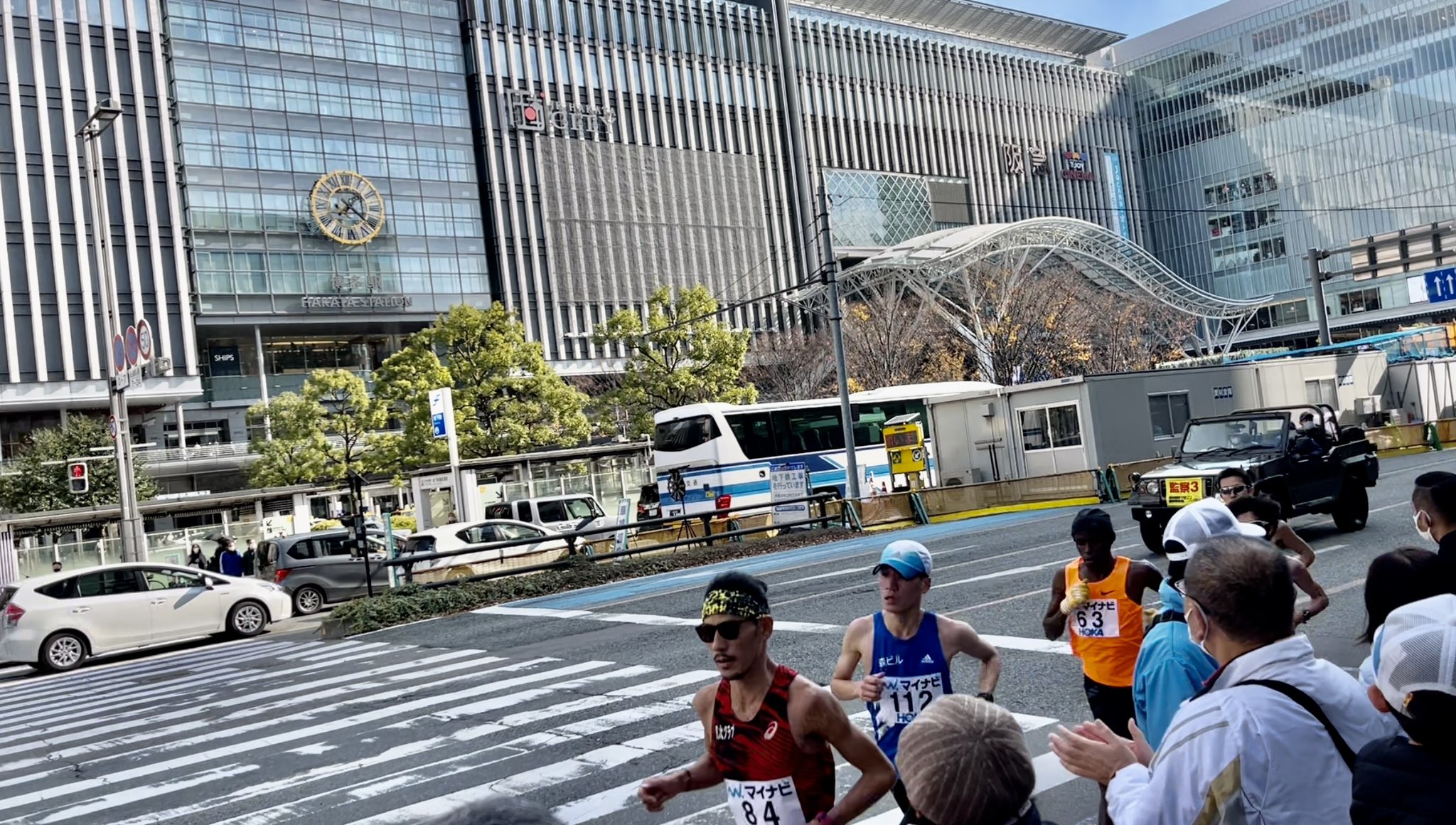On a bright early winter day athletes sprang to those streets for the last time from historic Heiwaidai Field, the race's start and finish point. Hana Fujito, 15, a 3rd-year junior high school student who came down to cheer excitedly for her running club's coach, said, "A lot of really famous athletes run here. It's cool to get to run in a big race."
Just past halfway in front of Hakata Station where the race had some dramatic action, the sidewalks were crowded with fans and shoppers. A woman who used to run marathons said, "The course goes near my home, so I've always enjoyed coming to cheer with my daughter. It makes me sad now."
Hideyuki Hashimoto, 62, watched the race near Najima Bridge. He first came to cheer along the course when he was in elementary school. Seeing the motion and hearing the breathing of the athletes from up close he remembers thinking, "Wow!" Now the president of a real estate company, since 1994 he has been cleaning the area around the bridge once a month with other volunteers from the local business association. Every December on marathon day his annual routine has been to clean in the morning and then watch the race. Friends who had moved away from the city would call to say that they had spotted him on the TV broadcast. On the 5th this year, as always, he was out in the early morning to clean the bridge before watching the race from his office. "Seeing the runners gave me motivation," he said. "I'm sorry to see it go, and I want to say thank you."
Wearing the blue uniform jacket of the amateur running club Ohori Runners, club leader Hideo Hashizume, 71, was at Otemon crossing in the race's final kilometer. He is well-known locally for having volunteered for courseside crowd control for over 25 years. Since his club was founded in 1981, members have met early on race morning every year to run the course before the marathon began. Their level was different from that of the athletes in the race, but, he says, "We always ran with the athletes in our hearts." Working courseside security was a special privilege, he says, because you got to feel both the passion of the runners and the enthusiasm of the crowds from close-up.
What left the deepest impression on Hashizume was the 2000 race, where Atsushi Fujita broke the Japanese national record. "It was thrilling to see how strong he still was even at that point late in the race," he recalls. At the final race, where local Fukuoka athletes finished among the top places, Hashizume once again had his privileged spot along the course. "This race was respected around the world," he said. "It was the pride of Fukuoka, and we loved it."
translated by Brett Larner
photos © 2021 Brett Larner, all rights reserved




Comments